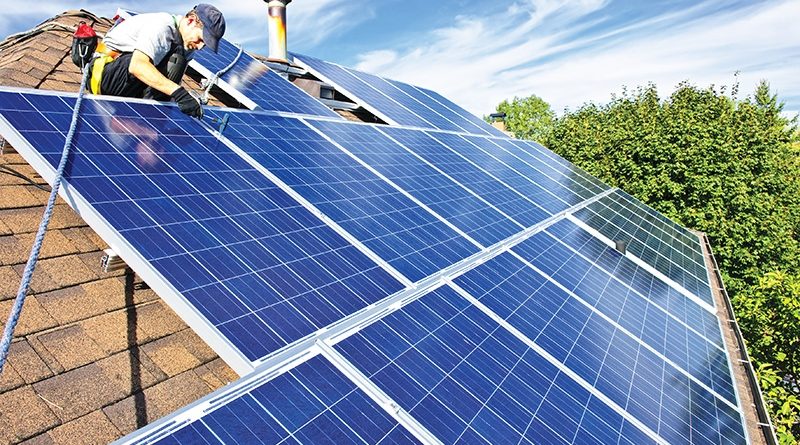Adapting to new solar PPA regulations
Vietnam’s Ministry of Industry and Trade recently issued Circular No.18/2020/TT-BCT which provides regulations on the development of solar power projects to guide the prime minister’s Decision No.13/2020/QD-TTg issued in April on the incentive mechanism for solar power development in Vietnam.
Circular 18 became effective from last month and superseded the previous Circular 16 on the same subject matter. Circular 18 introduces updated template power purchase agreements (PPA) as well as revised regulations for the development of grid-connected solar farms and rooftop solar power systems. Despite rapid growth and significant investment potential, the Vietnamese renewable energy market and the associated regulatory regime remains highly complex and constantly evolving.
As introduced under Decision 13 (extending Decision 11), the second feed-in tariff (FiT2) regime provides for a preferential FiT mechanism for a 20-year contractual term as under an executed PPA with Electricity of Vietnam (EVN).
This applies to grid-connected, floating, and rooftop solar power projects which achieve a commercial operation date (COD) prior to December 31, 2020. Within this context, developers are racing to complete projects prior to the 2020 deadline in order to enjoy FiT2.
Circular 18 specifically applies to the following solar power projects. Where a solar power project (grid-connected or rooftop) achieved COD from July 1, 2019 through to August 31, 2020 (the effective date of Circular 18), the seller and the purchaser must amend any pre-existing executed PPA to ensure that the terms of such agreement are consistent with the terms of the template PPA issued with Circular 18.
This is significant because it means that projects that were financed, built, and commissioned on the basis of a specific executed PPA now face changes to the fundamental and underlying contract terms.
Furthermore, where a solar power project (grid-connected or rooftop) achieved COD prior to July 1, 2019, such executed PPA shall continue to be valid and need not be amended to reflect the revised template PPA issued with Circular 18.
New project regulations
Circular 18 provides that the total area for construction of a grid-connected solar project (land or water surface area) must not exceed 1.2 hectares per megawatt peak (MWp). While this base number is unchanged from the previous regulations, Circular 18 clarifies that this area excludes power transmission lines or road access, but does include the actual power plant and transformer station.
Further, the basic design dossier of the project must include details of the project’s location, solar radiation potential, and impact on the electricity systems in the local area, load dispatch information, and design for connection to the supervisory control and data acquisition system.
Importantly, from a commercial perspective, Circular 18 overturns the previous minimum 20 per cent equity ownership threshold under Circular 16, thereby enabling developers to secure the bulk of project financing by way of debt funding.
Meanwhile, Circular 18 provides that where a proposed grid-connected rooftop solar system has a capacity of no more than 1MW, it is not necessary to obtain a formal power generation license. This is consistent with current regulations and reaffirms the position under Circular 36/2018/TT-BCT issued in 2018 by the Ministry of Industry and Trade on procedures for issuing and revoking electricity licences.
Rooftop solar developments with a 1MW capacity or less (AC capacity) or a 1.25MWp capacity or less (DC capacity) must nevertheless register their proposed connection with Electricity of Vietnam (EVN), including details of location for installation, output scale, and proposed connection point.
Additionally, after receiving EVN’s opinion on the project’s transmission capabilities, the developer must then enter into an interconnection agreement, obtain approval on the proposed sale of electricity, install metering equipment, and carry out technical testing, amongst other requirements.
The above requirements are all subject to very strict deadlines (often less than five working days) and it is highly recommended to seek the formal support of legal counsel to ensure such agreements are negotiated and executed in a timely manner, thereby preventing material transaction delays.
Significantly, the template PPA for rooftop solar projects issued with Circular 18 does not need to be used in cases where the developer sells power to a party other than EVN. In those cases, the parties are free to agree to terms and prices consistent with general Vietnamese contract law.
New template PPA
* Grid-connected solar farms
Mandatory use of template PPA: The use of the template PPA for grid-connected solar farms is mandatory. Parties may negotiate to include additional clauses which serve to clarify the rights and obligations of the parties, although in practice EVN may be reluctant to do so. Any supplemental terms must remain consistent with the terms of the template PPA, and parties are prohibited from making substantive alterations.
Force majeure: The previous template PPA excused a defaulting party from broadly performing their obligations should a force majeure event arise. Whilst the new template PPA provides for the same, it specifically limits the ability of a defaulting party to avoid payment of monies owed up to the date of the force majeure event.
Change in law: The new template PPA does not provide for a specific change in law clause. This is inconsistent with global best practice, and potentially leaves developers and lenders in a vulnerable position should an adverse change in law circumstance arise. Given Vietnam’s constantly evolving legislative landscape, particularly in relation to renewable energy, the potential protection provided by a change in law clause is significant, and thus would be very attractive to prospective foreign investors.
Off-take obligation: The new template PPA no longer obliges EVN to contractually agree to purchase the entire yield generated from the solar farm. Legally, this seems inconsistent with the previous obligation on EVN to purchase the entire output generated by the solar farm under Decision 13. Commercially, this creates significant concerns for developers and lenders alike, and may negatively impact forthcoming bankability assessments.
Curtailment: The new template PPA provides EVN with broad curtailment rights. Specifically, where the solar farm does not conform with relevant power regulations; during times of installation or repair; when EVN is carrying out inspection on portions of the grid which are connected to the farm; when EVN’s grid systems are broken; or when EVN’s power grid requires support to recover following a breakdown.
Termination payments: Of particular concern is that where the seller opts to terminate the agreement due to the purchaser’s default, the new template PPA provides that the termination damages amount will be calculated up to the time of termination, rather than based on the remainder of the 20-year contractual term. The previous template PPA under Circular 16 provided no such restriction. The incoming clause will therefore create significant concern for those projects already operating under pre-existing PPAs which now need to conform to the terms of the new template.
* Rooftop solar systems
The template PPA for rooftop solar system projects is largely the same as the template provided under Circular No.05/2019/TT-BCT, albeit with the following noteworthy amendments.
Mandatory use of template PPA: The use of the template PPA for grid-connected rooftop solar systems is mandatory. Parties may negotiate to include additional supplemental clauses which serve to clarify the rights and obligations of the parties. Any supplemental terms must, however, remain consistent with the terms of the template PPA. As noted above, the template is not mandatory where the power buyer is not EVN.
Continued silence: The template PPA still does not provide for specific change in law, termination compensation, grid unavailability, or tariff indexation provisions, thereby continuing to place an unfavourable risk allocation against the developer.
Dispute resolution: Concerns continue to exist with regards to the transparency and flexibility of the provided dispute resolution process under the template PPA. Where parties are still unable to resolve their differences post-mediation, it appears that the final body responsible for resolving the dispute will be EVN or its parent entity, thereby potentially greatly favouring the purchaser.
Late payment interest: The new template PPA introduces greater flexibility with regards to late payments. Parties are now free to include a late payment interest clause in an amount as agreed between the parties, in accordance with the Commercial Law 2005. The previous template PPA under Circular 5 limited the calculation of late payment interest to an amount based on the State Bank of Vietnam’s monthly interbank interest rate.
Metering system malfunction: Where the power metering system malfunctions, there is now an obligation on the seller to promptly notify the purchaser of such malfunction. The seller and the purchaser must then agree on the output of power during this time of malfunction, measured according to output based on the previous week, month, or year.
Conclusion
Vietnam’s solar power market and the associated regulatory regime continue to constantly evolve. The latest Circular 18 introduces updated requirements as well as a revised mandatory template PPA. Solar power projects with a commercial operation date between July 1, 2019 and August 31 will need to revise their pre-existing PPAs.
Source:vir.com.vn









